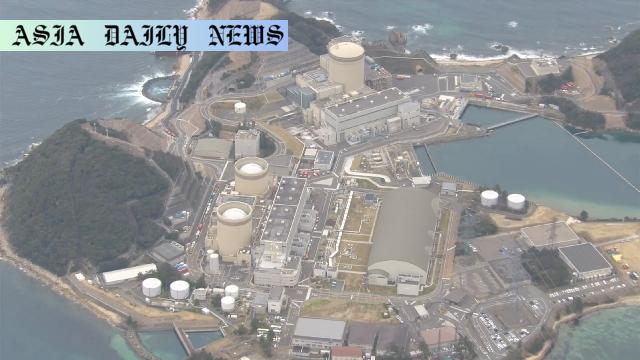Mihama nuclear plant considers the first new reactor construction since the Fukushima accident.

Japan’s Transition Back Towards Nuclear Energy
The Mihama nuclear power plant, located along the serene Sea of Japan coast in Fukui Prefecture, is regaining attention as Kansai Electric Power Company considers constructing a new reactor on its premises. If materialized, this reactor would possess not only operational but symbolic significance as Japan’s first nuclear plant post-2011, following the devastating Fukushima Daiichi accident.
Kansai Electric initially commenced geological surveys in 2010 to study the feasibility of the plant’s premises. However, the 2011 catastrophe led to an abrupt suspension of these plans, reshaping Japan’s perspective, regulatory frameworks, and public sentiment toward nuclear energy. Despite decommissioning its No.1 and No.2 reactors, Mihama’s operator now looks toward technological innovation and stricter safety parameters to rejuvenate nuclear objectives. The company plans to announce its intentions and collaborate closely with prefectural and national authorities for clarity and transparency regarding the project.
The Shift in Japan’s Energy Policy
Since the Fukushima accident, the Japanese government’s nuclear energy strategies have evolved significantly. Initially hesitant to increase the number of nuclear power stations, the government in February unveiled a comprehensive energy strategy aimed at maximizing nuclear energy. This strategy underlines expediting the development of next-generation reactors at locations slated for decommissioning, advocating an efficient use of resources while addressing energy challenges posed by global environmental concerns and reliance on fossil fuels.
The proposed plans for a new reactor at Mihama highlight this transition, marking a cautious yet determined step toward energy sustainability. Advanced reactors, bolstered by state-of-the-art safety systems, represent a technological shift intended to restore public confidence in nuclear energy. Japan continues to assess lessons learned from Fukushima, working toward refining safety measures and implementing protocols for disaster prevention.
Balancing Public Concerns and Future Prospects
The revival of nuclear energy projects in Japan remains a polarizing issue. While some stakeholders emphasize the potential for economic growth, reduced energy dependency, and environmental benefits, critics highlight safety risks and long-term waste management issues. Public trust, significantly eroded following the Fukushima disaster, must be meticulously rebuilt through transparent governance and stakeholder engagement.
For Kansai Electric Power Company, securing public support and addressing local concerns are indispensable. Community consultations, risk assessments, and environmental considerations are likely vital stages of the project’s trajectory. The government, too, is tasked with reinforcing strict safety benchmarks for new reactors to mitigate risks and dispel public apprehensions around this high-stakes endeavor.
The Role of Innovation in Revitalizing Nuclear Power
Emerging technologies are central to Japan’s nuclear revival plans. The Mihama site’s proposed advancements align with global trends in adopting small modular reactors (SMRs) and other next-generation innovations. These solutions focus on improved safety, scalability, and economic feasibility. Such advancements could mark a new era in nuclear energy, showcasing Japan’s commitment to remaining at the forefront of clean energy innovation.
In this context, Mihama’s proposed reactor could serve as a model for balanced energy development amid stringent safety oversight. The plant’s success has the potential to re-establish Japan’s credibility as a key player in global nuclear energy.
Conclusion
As Japan contemplates its re-entry into nuclear energy development, the Mihama nuclear power plant stands as a symbol of hope and determination amid global energy challenges. With a dedication to innovation, sustainability, and safety, this venture could signify a transformative chapter in Japan’s energy narrative. However, achieving this requires collective resolve, transparency in planning, and meticulous attention to addressing public concerns about safety and environmental impact. The outcome of such efforts may pave the way for a broader global dialogue on the future of nuclear power.
Commentary
The Emotional Dilemma of Nuclear Energy Revitalization
The prospect of restarting nuclear operations at Mihama is both intriguing and deeply challenging. As a symbol of Japan’s resilience, the proposed project represents the delicate balance between innovation and societal apprehension. Fukushima’s devastating aftermath lingers heavily in public memory, casting long shadows over every effort to revitalize Japan’s nuclear energy program. That legacy of disaster compels Kansai Electric and the Japanese government to tread these waters with measured caution, prioritizing security, transparency, and trust above all else.
Renewables Versus Nuclear in a Global Context
Nuclear power continues to evoke polarized views globally. While proponents argue for its necessity in reducing carbon footprints and meeting towering energy demands, critics remain skeptical due to the historical baggage of prior accidents and waste concerns. Mihama could offer valuable lessons in bridging this global divide. By leveraging next-generation technologies, Japan has a window of opportunity to present groundbreaking safety protocols and contribute, not only solutions to their energy woes, but also global frameworks for nuclear accountability.
Building Confidence through Engagement
The true challenge lies in securing the trust of the Japanese public for this new venture. Honesty and transparency will form the essential pillars of this effort, ensuring the public is extensively consulted on every twist and turn of the project’s advancement. Kansai Electric’s proposed plans will test not only Japan’s infrastructural and financial might but also its cultural willingness to embrace calculated risks for national energy independence and development.
The Mihama project symbolizes a pivot point for the country. Its success or failure will set the tone for Japan’s energy policy for decades to come, influencing how citizens perceive safety, how governments evaluate risk, and how the world approaches nuclear energy innovation.


